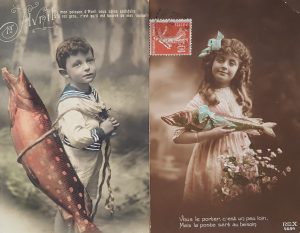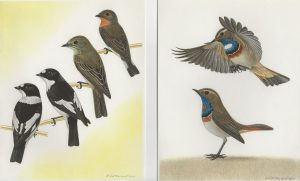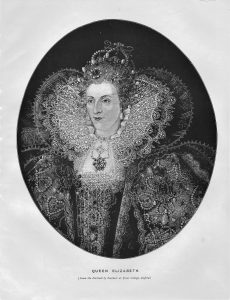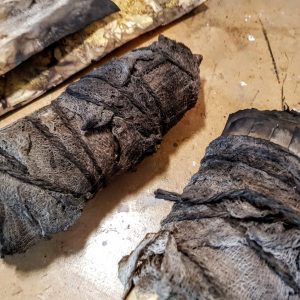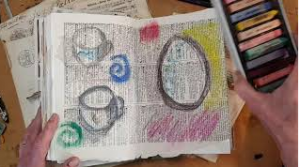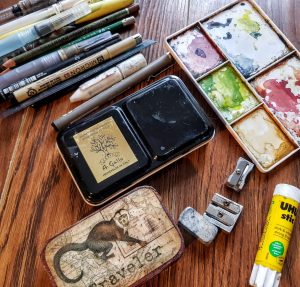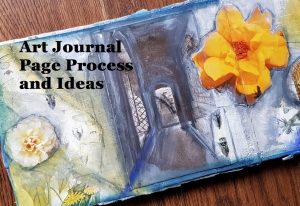Here is a recent video from my Youtube channel on ways to look at the stuff that we all have all around use and see if we can’t be resourceful and turn it into free, found art supplies. Whether you are on a budget, trying to reduce waste, or enjoy a challenge to your imagination, these ideas will jumpstart your practice with everyday stuff available for free to anyone. I go through these ideas pretty quickly so here is a list that you can refer to if needed (and the approximately time stamp so you can forward there if you want).
- Introduction
- Ways to use found cardboard and packaging: *Making a mini-book from box or mailer (2:48)
- Tags and Bookmarks
- Die cut paper embellishments (6:48)
- Free, found stencils (8:24)
- Tissue Paper (12:00)
- Paper Wrapper Frame (10:05)
- Mesh Onion Wrapper (9:11)
- Brown Envelope Pocket With Window (11:15)
- Bubble Wrap Mark Making (13:30)
- Printmaking with Styrofoam “Plate” and Mark Making with Corrugated Cardboard and Blister Dispensers (15:35)
In the final segment I mention Birgit Koopsen’s Youtube channel for tons of inspiration and it is [read more]


 Follow
Follow

